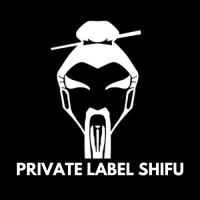PRIVATE LABEL SHIFU BLOGS
Ready to dive into more exciting content? Explore our latest blogs now!
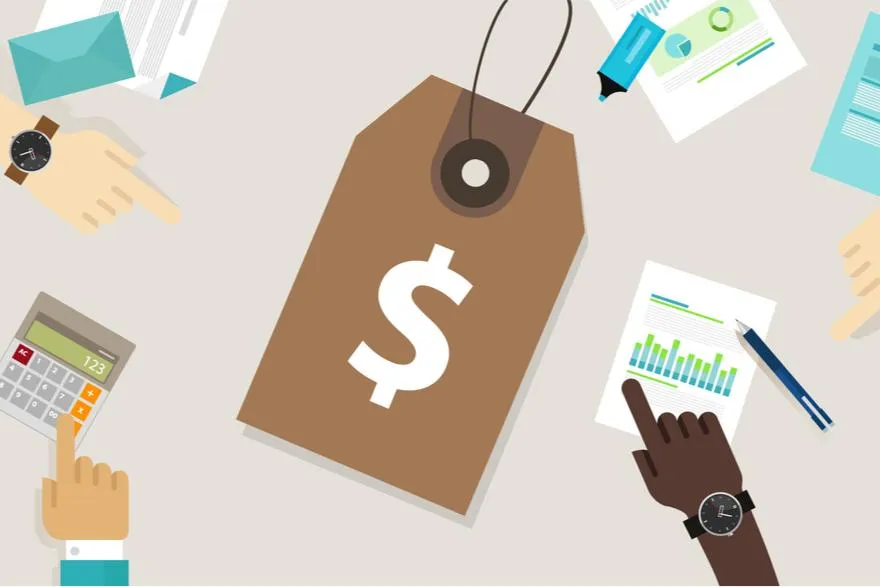
The Best Way to Price a Product for Amazon Sellers in 2024
“If people don't pay for your service, they will play with your service. Price professionally and let them pay.” - Ned Bryan Abakah
On Amazon, every seller's primary objective is to maximize sales. Several factors influence a customer's decision to purchase a product, including its ranking in keyword search results, review count and rating, quality of images and product description, shipping speed, and, crucially, its price. These elements collectively contribute to a customer's purchasing decision, making them vital considerations for sellers aiming to succeed on the platform.
Implementing an effective pricing strategy for your private label brand on Amazon is essential. Unlike retail arbitrage or wholesale methods where sellers compete for the Buy Box, private label sellers compete with other products within search results. Therefore, setting the right price is crucial to remain competitive and attract customers to your product, even though you're not directly vying for the Buy Box.
If your product is priced too high, customers may be deterred, opting for more affordable options offered by competitors. Conversely, pricing your product too low could initiate a pricing war, diminishing the value of your product niche and reducing your profitability in the process. Finding the right balance is crucial to maintaining competitiveness and maximizing profitability.
Recognize your profit margin.
Competitive pricing
Make your product stand out.
A/B testing of various costs
Over Amazon's minimum free shipping price
Apply "charm pricing."
Establish a business rate.
Give coupons for discounts.
Amazon Product Prices in 2024
When researching the appropriate price for your product, it's beneficial to comprehend the Amazon marketplace, including consumer preferences and how other sellers (your competition) address those demands. Understanding these factors can guide you in setting a competitive price that resonates with customers and stands out among competitors.
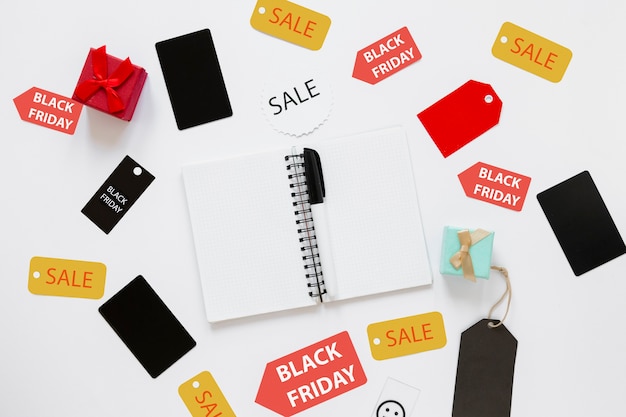
E-commerce is experiencing a significant surge, with a growing number of people opting to shop online. Over the past year, Amazon has emerged as the preferred shopping destination for U.S. consumers, surpassing both online and in-store retail outlets. While Amazon shoppers prioritize finding products at the lowest price, an impressive majority of consumers are willing to spend up to $100 on a single product from Amazon.
However, it's important to remember that not every purchase on Amazon involves spending $100. This is reflected in the average prices of products sold by Amazon sellers.
57% of Amazon sellers set their prices for their goods between $15 and $50 in 2023.
In addition, 58% of highly successful sellers, those who have earned lifetime profits of $500,000 or more, price their products below $30. This suggests that you don't need to sell luxury items to thrive as an Amazon seller; rather, it's crucial to refine your product pricing strategy.
Here are top methods for pricing Amazon products:
1.Recognize your profit margin.
While seeing revenue come in is exciting, it's only truly beneficial when it surpasses the expenses of sourcing, listing, and shipping your products by a healthy margin. This emphasizes the necessity of calculating your profit margin early in the product research phase to avoid potential losses on each sale later on.
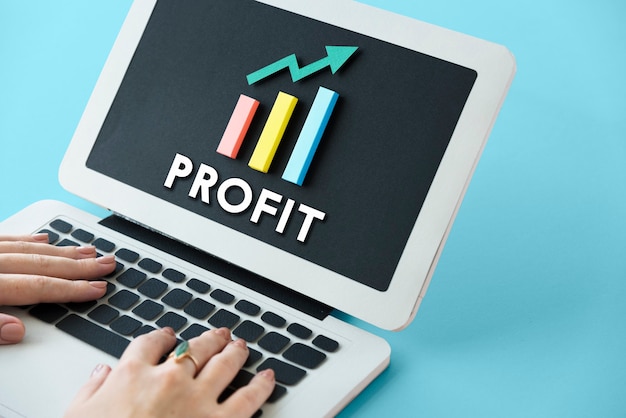
Profit margin is the percentage of income you retain after subtracting all expenses, such as cost of goods sold (COGS), Amazon referral fees, FBA fees, PPC costs, and other expenditures. Generally, profit margin is determined using the following formula:
Profit Margin is calculated as ((Sales - Total Expenses) ÷ Revenue) x 100.
We can estimate our profit margin using the "Rule of Three." Under this rule, we assume that the money from each product sale is divided as follows:
1/3 goes toward fees
1/3 is consumed by landed costs before the product is sold (landed costs include shipping expenses, duties, taxes, and fees on inventory)
1/3 is left as profit for us.
For instance, if you price your product at $30, applying the Rule of Three suggests that you'll spend approximately $10 on landed costs ($30 divided by 3), an additional $10 on fees, and retain a profit of at least $10.
To find the profit margin, you divide the profit you made by the selling price, then you multiply by 100 to get a percentage.
$10 ÷ $30 = .33
To turn it into a percentage, you multiply by 100. So, the profit margin is 33%. That's a really good profit margin!
For Amazon sellers, it's advisable to target a profit margin ranging from 25% to 30% for their private label products. To provide context, a significant portion of Amazon sellers, around 58%, operate with profit margins surpassing 15%.
Additionally, over one-third of sellers achieve profit margins exceeding 20%. Strikingly, nearly half of the highly successful sellers maintain profit margins ranging between 21% and 50%. In essence, the higher the profit margin, the better the performance, with many successful sellers consistently attaining substantial profit margins.
Having a good profit margin is really important for businesses.
It means you have some extra money to spend on things like advertising when you're starting out. When you figure out the best ways to advertise and spend less money on it, your profits go up. So, having that extra money at the start helps you find the best ways to advertise and make more money in the long run. It's like having a safety net for your business.

Before getting products from your supplier to sell on Amazon, it's important to know how much you'll sell them for. You need to figure out all the costs involved, like how much it costs to get the product, Amazon's fees, shipping fees to get the product to Amazon, fees for storing the product there, and how much you'll spend on advertising. This helps you set a price that ensures you make a profit once everything's accounted for.
When you're thinking about selling a new product, it's crucial to carefully look at whether it will make you money, if people want it, and how many other sellers are offering the same thing. You have to think about all the costs involved in selling the product too. This way, you can decide if it's worth it to sell that product or if you should look for something else that might be more profitable.
Determine on your lowest and highest price.
You need to figure out the lowest and highest prices you can sell your product for based on how much it costs you to get it. This helps you stay competitive with other similar products. If your costs are low, you can sell for less and still make money. If your costs are high, you have to sell for more to make a profit. This way, you find the best price to make sales and stay competitive.

It's important to find the right balance with your pricing. If your prices are too high, customers might choose to buy from other sellers offering similar products at lower prices. On the other hand, if you set your prices too low, you might not make enough profit to sustain your business. So, it's crucial to price your product in a way that attracts customers while still ensuring you make a healthy profit.
Setting your minimum price at your breakeven point is a smart strategy. This means you're selling your product for at least the same amount it costs you to make it. For example, if it costs you $5 to produce your product, setting your minimum price at $5 ensures you're not losing money with each sale. It's a simple way to make sure you cover your costs and avoid eating into your profits.
2. Competitive Pricing
As a private label brand on Amazon, your objective should be to deliver value to your customers. This means offering products of top-notch quality at prices that are fair and reasonable.

When customers feel they're getting quality products at a good price, it enhances their overall experience and builds trust in your brand. So, prioritize providing value through quality and affordability to attract and retain customers.
Your main objective should be to develop a unique and credible brand on Amazon, rather than simply offering generic products. This strategy increases the perceived value of your products and makes them stand out from the crowd. By crafting a brand identity and story that resonates with customers, you can build stronger connections and loyalty. This not only sets you apart from competitors but also leads to greater success in the marketplace.
New products without reviews initially have a reduced price.
If your product is new and has no reviews, it's smart to price it a bit lower than your cheapest competitor. This helps attract customers until you get reviews and gain traction. Later on, when you've built up a reputation, you can adjust your price.
Here's how we can put it simply:
If most similar products are priced between $16.99 and $19.99, consider pricing yours at the lower end, like $15.99 or $16.95. This makes your product more appealing without sparking a price war. It's a balance between being competitive and avoiding unnecessary price conflicts.
What I mean by it is if you price your product at $11.99, significantly lower than the $16.99 average, your competitor might lower their price too to stay competitive. Then, other competitors might follow suit, leading to a price war. Eventually, customers expect lower prices, and everyone's profit margins shrink. It's a lose-lose situation where nobody benefits in the end.
Lowering prices too much hurts everyone's ability to make money. It makes the product or niche seem less valuable, and that's bad for everyone's profits. So, it's important to keep prices fair to maintain profitability for everyone involved.
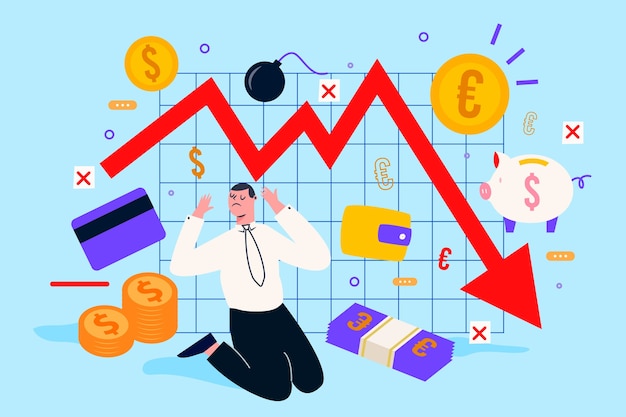
What would happen if my competitors drastically reduced their prices?
Getting into a price war is a big worry for private label sellers on Amazon. Actually, about two-thirds of them are worried that more competition will push prices down.
Sellers who try to boost sales by slashing prices aggressively usually don't stick around for long. They soon realize that lowering prices too much removes any chance of making a profit, especially when considering advertising costs like PPC (Pay-Per-Click).
Here's my advice: Hold your ground. Don't get caught up in price wars that can harm the niche you're selling in. Those sellers who push prices down too far will likely lose profitability and fade out eventually. Stick to your price range and concentrate on creating an excellent, well-optimized listing.
Keep an eye on your competitors' pricing.

Indeed, it's important to monitor how your competitors are pricing similar products. Whether you're starting out with product research or expanding your current product line, tracking your competitors' products over time is essential to assess the viability of your product. By keeping an eye on their pricing strategies, you can gain valuable insights into market trends, customer preferences, and competitive dynamics. This information enables you to make informed decisions about your own pricing strategy and product offerings, ensuring your competitiveness and success in the market.
Use Product Tracker to keep an eye on your competitors' sales, Best Seller Rank, inventory, and Buy Box price in real-time. This ensures their products are consistently selling at a certain price, and helps you avoid getting into a price war unintentionally.
Which pricing level must I stay in?
As a new seller, it's common to have a smaller budget, and that's perfectly fine! However, this might limit the products you can sell. For example, if your startup budget is between $500 to $1,000, you won't be able to sell products with a $100 price point because you might not meet the supplier's minimum order quantity with your budget.
No need to worry! Many successful sellers list products at affordable prices.
As prices go up, competition tends to decrease. This is because listing more expensive products often requires a larger investment in inventory. So, fewer sellers are willing or able to compete in higher price ranges, leading to less competition for those products.
If you can afford it, choose higher-priced products. This lowers the risk of getting into price wars common with lower-priced items.
3. Set your product apart.
To charge a higher price than your competitors, you need to explain to customers why your product is worth the extra cost compared to similar items.

Simply putting your logo on a competitor's product from Alibaba and selling it at a higher price won't work. You have to think about what makes your product better for the customer, like additional features, benefits, or higher quality
A simple way to begin is by reading customer reviews of your competitors' products. Look for areas where they fall short, and then make improvements in those areas with your own product.
When researching your competitors' products, ask yourself if you can use higher-quality materials or add features that enhance the customer experience. These considerations can help you improve upon existing offerings in the market.
You can't sell the same old product and expect customers to pay a higher price. By offering something unique or of higher quality, you can justify charging more and attract customers who value that difference.
4. Test various prices A/B
A great method to determine the optimal price for your product is to conduct a split test, also known as an A/B test. This involves listing your product at two different prices for a specific duration and comparing their performance. By doing so, you can make informed decisions about pricing based on data rather than relying on guesswork.
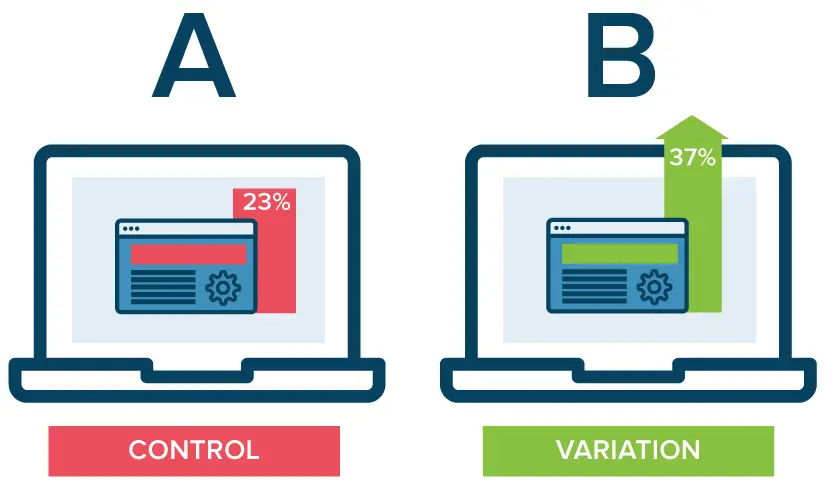
For instance, if your product is priced at $24.99 but you're considering raising the price, conduct a split test. Track sales performance for two weeks at $24.99, then for another two weeks at $26.95. After four weeks, compare which period saw higher sales. If you sold more at the higher price, consider keeping it! This way, you can make data-driven decisions about pricing.
5. Products priced more than Amazon's minimum amount for free shipping
For buyers who are not Amazon Prime members, they may still receive free shipping on eligible products if they meet certain criteria set by the seller or if they reach a minimum order value. Otherwise, non-Prime members typically pay for shipping based on the shipping options available at checkout.
For non-Prime members in the US, shipping costs are typically applied to orders below $25. This extra expense, ranging from $5 to $10, could deter potential purchases. By pricing your products above the $25 threshold, you can attract more non-Prime customers, as they qualify for free shipping, making your products more appealing in terms of total cost.
6. Apply "charm pricing."
Charm pricing, also referred to as psychological pricing, involves deliberately setting prices to affect customers' buying behavior.

For example, consider pricing your product at $19.99 instead of $20. At $19.99, the product appears to be a better deal, even though it's only one cent cheaper. This slight difference can have a significant impact on customers' perceptions and purchasing decisions.
If the product that you're selling that's considered an "impulse purchase," like a novelty item, using this pricing strategy can potentially increase your conversions. Customers may perceive the slightly lower price as a deal, prompting them to make a purchase on the spot.
A/B testing means trying out different prices to see what works best. For example, you could test prices like $19.99 (charm pricing), $19.95, and $20.00. Then, you see which price gets more people to buy your product. It's a way to figure out the best price for your product.
For luxury or expensive products, prestige pricing can be the way to go. These products often have prices ending in .00, which adds to their aura of exclusivity and sophistication. Take a look at brands like Apple or high-end designer items—they frequently use round-number prices to convey prestige and quality.
In A/B testing, you'd compare these round-number prices (like $1,000) with other options (such as $999.99) to see which resonates better with your audience. By doing this, you can find the pricing approach that enhances the perceived value of your luxury product and boosts sales.
7. Establish a Business Rate
Amazon Business lets businesses sign up for special accounts. With these accounts, businesses can buy things tax-free and get discounts on bulk purchases. It's a handy way for companies to save money and manage their buying needs.

Amazon allows sellers to set special business prices exclusively for Amazon Business-registered buyers. This means you can offer discounts and bulk pricing to encourage larger orders from commercial clients. It's a great way to attract and cater to business customers while also maximizing sales opportunities.
Amazon Business buyers see special prices set by sellers specifically for them. These prices might include discounts or deals for buying in bulk. It's a way for sellers to attract more business customers and boost sales.
To create a business price in Seller Central, start by going to "Manage Inventory." From there, head to the "Preferences" section. This is where you'll find the tools to set up special prices for Amazon Business buyers.
Just make sure to tick the box labeled "Business Price" to set up special prices for Amazon Business buyers.
Once you've checked the "Business Price" option, you should see the option to set a business price and quantity discount directly in your "Manage Inventory" section. This allows you to customize prices and offer bulk discounts for Amazon Business buyers.
8. Offer coupons to give discounts.
Adding a coupon to a new Amazon listing is a smart move to generate initial sales momentum. Amazon prominently displays coupon offers beneath your product's price in keyword search results, making your listing more attractive to potential customers. This can significantly increase click-through rates and conversions, giving your listing a competitive edge and boosting its visibility on the platform.

A smart strategy on Amazon is to increase your price a bit and then apply a coupon to your listing. This gives customers the perception of a great deal without devaluing your product too much. Using coupons can be more effective psychologically than simply lowering your price without offering a coupon.
Setting up a coupon with Seller Central is simple. Navigate to "Advertising," then "Coupons." Select "Create a new coupon," then follow the on-screen instructions. The product you wish to discount, the type of discount (Money Off or Percentage Off), and the duration of the special pricing will all need to be entered.
Instead of pricing later, optimize your pricing approach as soon as possible.
Are you potentially missing out on higher profits?
It's time to put your pricing strategy to the test using the techniques mentioned above. Amazon is highly competitive, and what works for your competitors may not work for you. By thoroughly testing different pricing approaches, you can find the optimal price point that drives consistent sales for your product. It's all about experimenting and adapting to what resonates best with your target audience.
Do you have any more inquiries or advice about Amazon pricing strategies?
Book a Call with us today!
AMZ Shifu can help you in optimizing your pricing approach that can drive consistent sales for your product!
GET THE LATEST NEWS
AND MEET AND SEE REAL CONVERSATIONS FROM OUR SUCCESSFUL MENTEES
⭐⭐⭐⭐⭐
Books Recommendation for Amazon Private Label
IF YOU ARE SERIOUS ABOUT TURNING YOUR LIFE INTO A NEW CHAPTER CLICK THE BUTTON BELOW TO APPLY FOR OUR DISCOVERY CALL
NO COMMITMENT REQUIRED IF YOU ARE NOT A GOOD FIT
DISCLAIMER: The sales figures stated anywhere on this funnel are individual sales figures and marketing results. Please understand that sales figures are not typical, and we are not implying that you will duplicate them. We have the benefit of doing online marketing for 4+ years, and have an established following as a result. The average person who simply purchases any “how-to” program may not follow through on what they are being taught and because of that we cannot guarantee any specific result. We are using these references for example purposes only. Sales figures will vary and depend on many factors including but not limited to background, experience, and work ethic. All business entails risk as well as massive and consistent effort and action. If you’re not willing to accept that, this is not for you.
>ABOUT THE STRATEGY SESSION: After completing an application, you will get the opportunity to schedule in a Strategy Session with a qualified person from our team. This is completely optional. The Session lasts about 45 minutes and if you do not want to work more closely with us, you can leave without buying anything. The Strategy Session to provide insights insights on the operations of your business and offer strategies for growth that you will be able to implement right away.
NOT FACEBOOK™: This site is not a part of the Facebook™ website or Facebook Inc. Additionally, This site is NOT endorsed by Facebook™ in any way. FACEBOOK™ is a trademark of FACEBOOK™, Inc. Hi! We use cookies, including third-party cookies, on this website to help operate our site and for analytics and advertising purposes. For more on how we use cookies and your cookie choices, go
here for our cookie policy!
@2024 AMZSHIFU.COM All Rights Reserved

